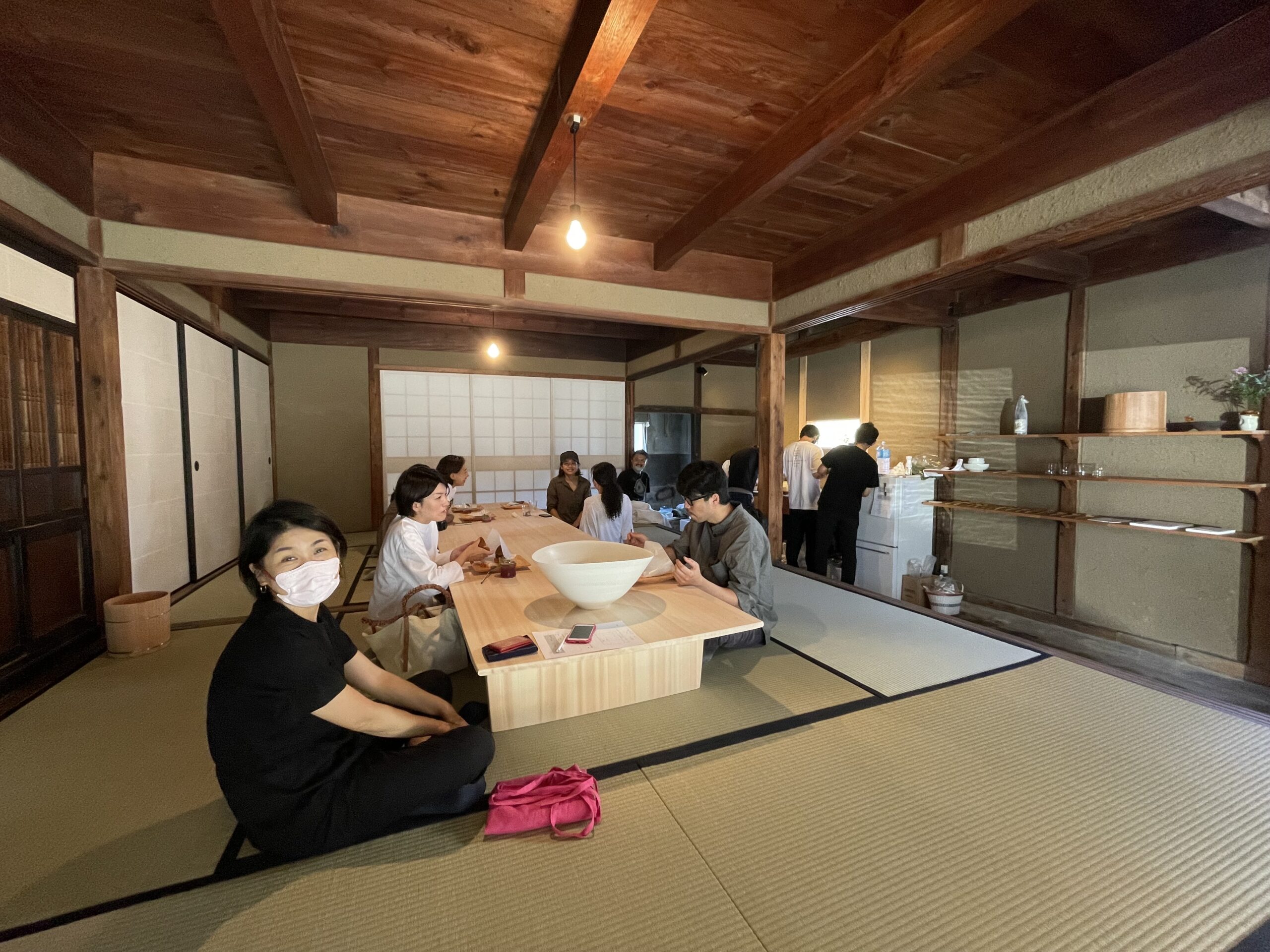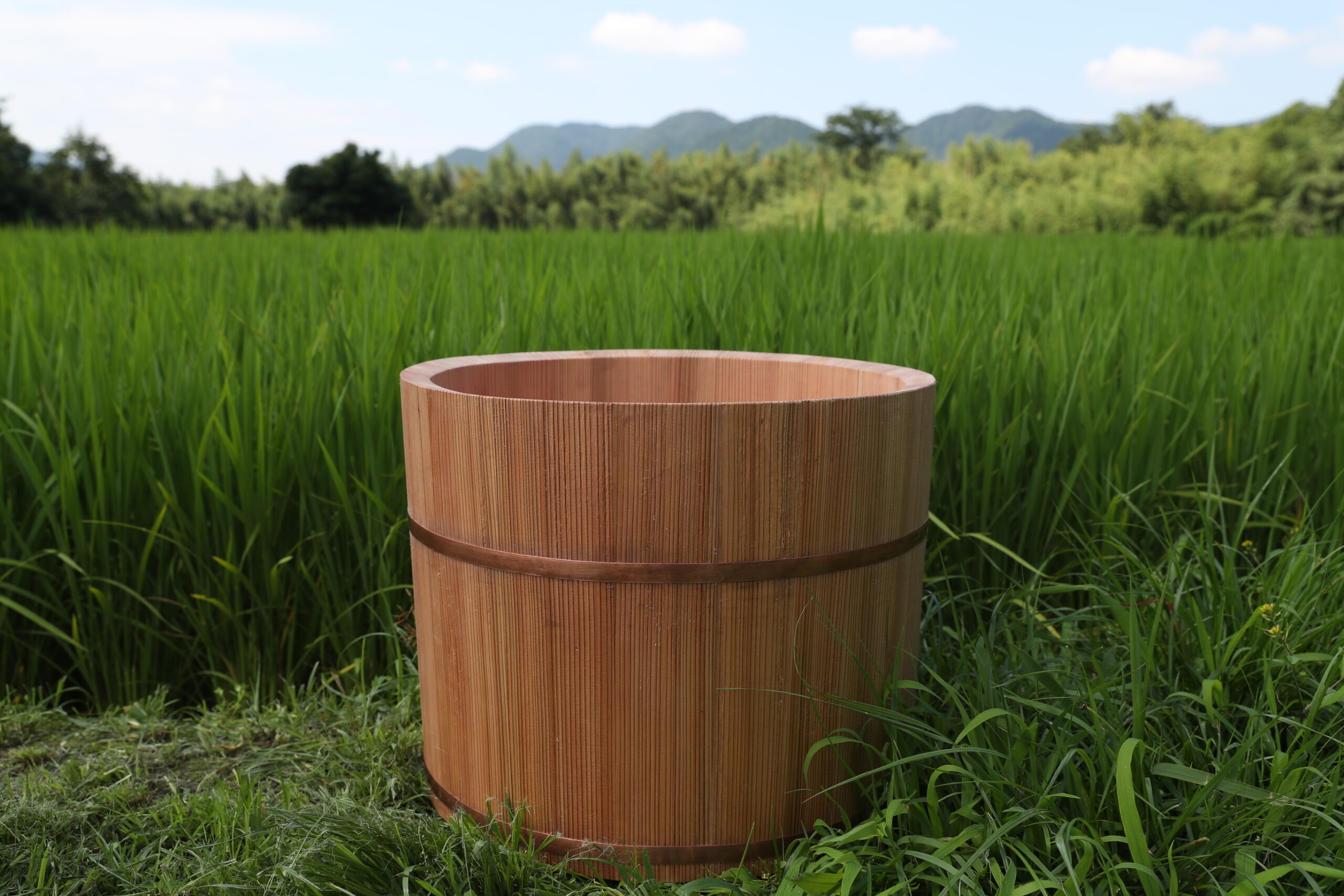
2024.10.2
Cultivating Tomorrow #2
Conversation with Kayo Tokuda and Shuji Nakagawa
Harvest of TOMORROW FIELD
Shuji Nakagawa crafts wooden containers drawing from traditional wooden tub making techniques. Over the past decade or so, the range of his crafts expanded from hand-held wooden buckets to a room that can accommodate people inside. His creative evolution somewhat coincides with the period of numerous collaborations with Kayo Tokuda, the founder of Non-Profit Organization TOMORROW, followed by the art projects based in the community of Taiza, Kyoto.
It was 2010 when Tokuda moved to Kyoto. She says she needed to gain a deeper understanding of the craft and the culture. She met Nakagawa, a third-generation wooden tub craftsman whose grandfather was praised as the best in Kyoto. They started working together to create an art piece, but what came out was more than an object.
I conducted an interview to gain firsthand insight into their collaborative, creative process, with Shunya Hashizume from the TOMORROW joining to provide additional background information.
In my previous interview with you, Tokuda san, I was fascinated with your evolutional journey from being fixated on a 2mm difference during the Chichu Art Museum construction period, to not minding 20 cm difference in Taiza. And Nakagawa san, you have witnessed that journey, right?
Kayo Tokuda(T): I came to Kyoto after realizing that it takes many exceptional skills of craftspeople to create a piece of contemporary art. However, with the same excellent technique, a wooden champagne cooler costs 70-80 thousand yen whereas a contemporary art piece can be priced at tens of millions of yen. It made me wonder what made the difference. So I came to Kyoto to learn more about the craft world and its system.
Nakagawa san and I met fairly soon after I moved here, didn’t we?
Shuji Nakagawa (N): Yes, and we started working together. Though at first, my approach to Tokuda’s request was about how to realize what had been placed as an order. I was constantly checking on her reaction to see if I was on the right track.
How does the collaborative process work?
N: My collaboration with Hiroshi Sugimoto is a good example. It was a piece I had completed exactly as indicated in the requested plan, not a millimeter out of place. It’s a craftsman’s job and pride to make things according to the client’s request. But for some reason, she said “No” from the side and didn’t accept my work. I mean, she was NOT the client, but she was giving me “No” still. (laughs)
T: I told him it wasn’t it. It just wasn’t.
N: At first, I had no idea what she meant at all. But then it came to me that the work I made was not fully my own. I needed to digest it better and reinterpret it in my own words, and what I made next received “Yes” from both Sugimoto and Tokuda.
T: I said, “Why didn’t you make this in the first place?” as a joke.
N: It’s easy to get caught in a trap when trying to meet someone else’s requests. By “trap,” I mean not fully owning the responsibility for the work I produce. Tokuda saw right through it. She has an intuitive sense for it, which I think is a unique and remarkable skill.
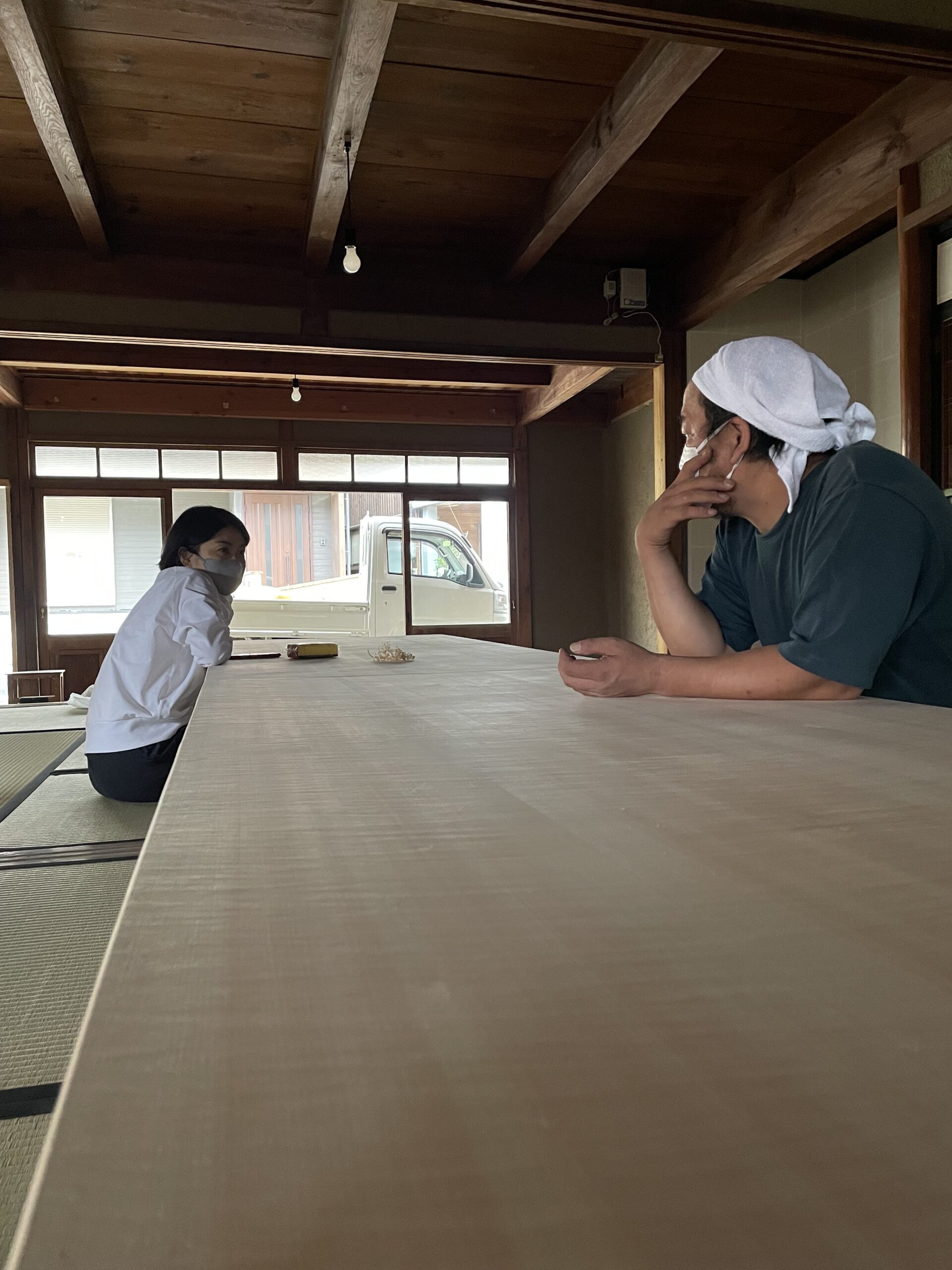
What do you look for when presented with new works, Tokuda san?
T: Whether it’s cool or not. Or if there is any sign of doubt. The wrapping often speaks as much as the work itself. When a piece is finished and the creator is fully confident, it shows in the precise folding and neat wrapping. Conversely, when the creator was unsure of the work and kept tweaking till the last minute, I can tell from the wrapping cloth poking out of the cardboard box. In such cases, I might ask to rework it and bring it back another time, without needing to open the box.
N: She’s usually the one that destroys the concept. Let’s say we create a work from a concept: the theme is discussed based on the location or some other factors, and mutual agreement is made and shared, and we start working based on the concept. It’s almost like building blocks of logic and we can all see the causal relationship between the concept and the work.
But Tokuda destroys the accumulated building blocks. She throws in something completely different out of the blue, and everything built up to that point is turned upside down. But more importantly, she does that when the whole thing is heading in the wrong direction. And what she throws in is almost prophetic.
(Hashizume) Never say “But you said …….” It never works with Tokuda san. Her action is rooted somewhere deeper than logical thinking. And it is usually the concept built on top that started taking on the wrong course when she has to step in.
N: To re-connect with the deepest layer that remained unchanged.
So she takes intuitive action, something beyond words and logic.
N: What I also find incredible is that… she makes me realize this is what I actually wanted to create.
It’s like the act of climbing a ladder or steps. Climbing stairs can become a goal in itself. It offers a sense of accomplishment, and that is fine as a maker. However, in order to find what I really want to create, I have to stop, resist the momentum and reflect. And that’s what Tokuda san looks for in a creator.
T: Don’t we want to create something meaningful while we’re here? Because we all cross to the other side eventually. That’s why I always begin with this question, “What do you want to create?”
It’s quite a process, or a journey shall I say, to reveal creative desire that even the creator himself was unaware of.
N: Another time was in London. We went to exhibit my collaborative piece with Hiroshi Sugimoto. Tokuda and I had to set up the work before his arrival. She didn’t like the lighting: she thought it was not complementing and told me to do something about it before tomorrow morning, when Sugimoto was scheduled to come in.
I don’t speak English, you know. But I went to every electronics store in town and bought all kinds of LED bulbs. I just kept saying, “More, more” (laughs). I bought about 40 bulbs, came back, and replaced the previous bulbs. We tried all but none of them was good enough.
I examined the bulbs carefully and saw that an LED bulb consisted of numerous small LEDs to enhance brightness. What was happening was that each of these small LEDs interfered with one another, casting unwanted shadows. So I returned to the hotel, disassembled the LED bulbs and removed some of the small LEDs. The following morning, she finally gave me a sign of approval.
T: But it was worth it. In the end, a renowned collector purchased the piece and I was able to reward him with a substantial sum.
N: When we work with Tokuda san, we need to keep making adjustments or prototypes until she approves. Sometimes these changes are beyond the “building blocks” as we talked about earlier on, and we aren’t compensated for the time spent on those prototypes, either. It’s not the working style craftspeople are used to and some have walked away because they didn’t think it was worth the trouble. To me, there was something more than money. I wanted to see what she was seeing and understand her vision, and that kept me motivated.
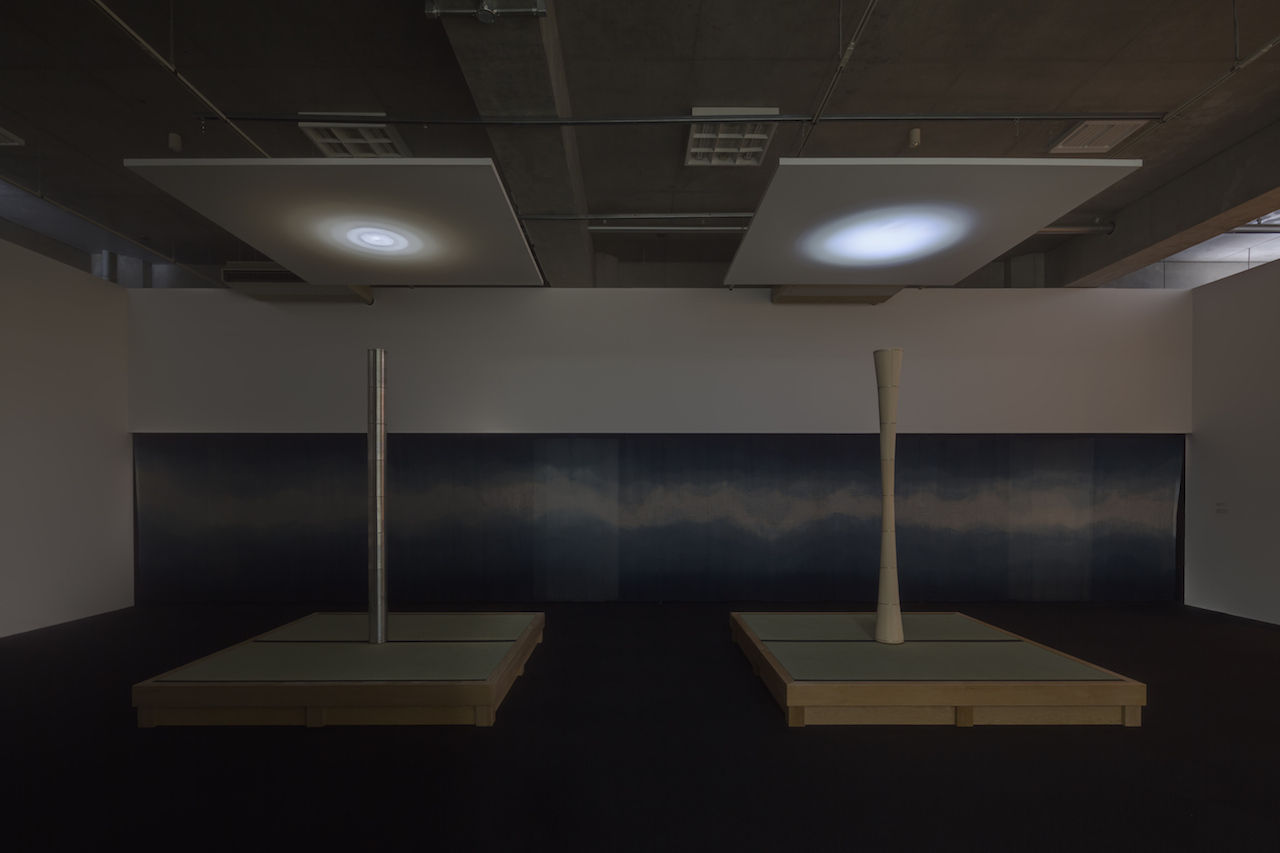
Tell us also about the horse trough created by Nakagawa san.
T: At the time, I was revisiting the film “Seven Samurai”. There was a scene where a horse was grazing on grass in a big tub, and I thought, “How cool is that?” So I sent him the picture of it, the usual tactic, asking “Can you make this?”
N: That one was a challenge. It came out completely different from the prototype. For the first one, I used braided ropes to attach to a horse. Her reaction was pretty frosty.
T: I wasn’t asking him to recreate the Edo period! (laughs). I wanted his work to be the symbol of TOMORROW FIELD.
N: I didn’t dwell on it. I just thought, “OK, this wasn’t it,” and moved onto the next. I decided to disregard the functionality. Instead, I focused on the balance and proportion of the diameter, the height, and placement of the hoops. What I made was a tub that I genuinely considered to be beautiful.
And it successfully made its way into TOMORROW FIELD: when I saw it in the rice paddies, it felt more authentic than when I completed it in my studio. “Ah, it really was meant to store rice stalks,” it convinced me on a visceral level.

T: When I saw this, I knew he could also make larger constructions. To be specific, it’s the diagonal finish on this top edge. I didn’t make any particular request on this part, but he still finished in this style, which moved me. After that, I stopped giving directions so much.
N: This finishing technique comes from my grandpa. I always thought it looked beautiful, so I integrated it into this piece. It’s a bit of my artistic individuality shining through.
T: I was so happy to know that I could create something bigger with Nakagawa san. I really can’t make anything on my own. It won’t be fun unless we do it together; it won’t result in great work, nor will it bring us any joy. This trough symbolizes our way of making.
“Create together” is your central theme, isn’t it?
T: I can almost hear music the instant I enter a space of exceptional art. For example, architect Ryue Nishizawa mentioned that “Jumpin’ Jack Flash” by the Rolling Stones flows into his ear as he goes to the project site of the Teshima Art Museum. To me, it was Beethoven played by cellist Annar Bylsma. It is a sign that the space is experienced holistically and that everything is working in perfect harmony. It is a symphony that cannot be expressed in words, played by every detali at the site.
N: Since I started taking part in TOMORROW FIELD, I finally began to see Tokuda san’s vision.
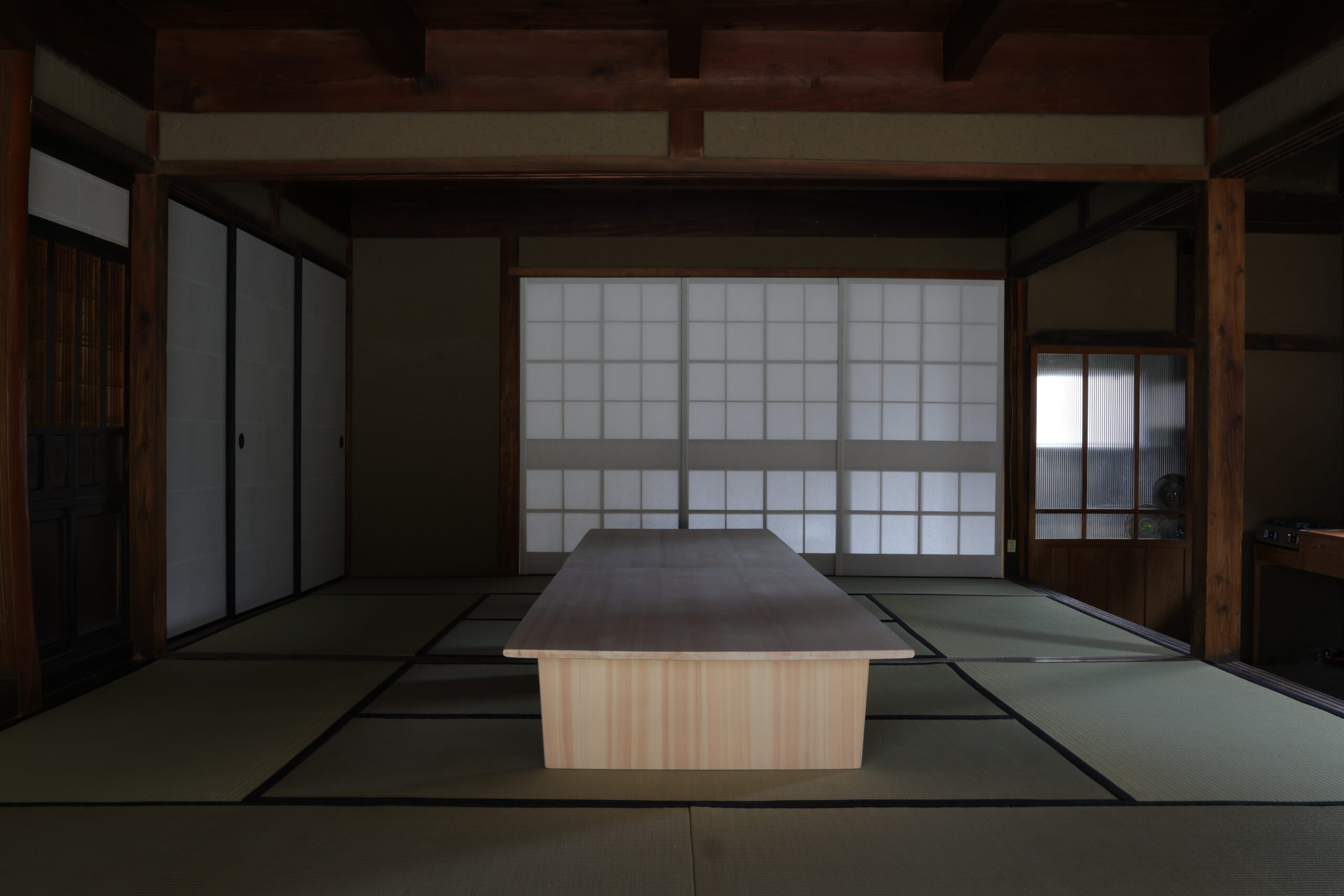
T:I fully trusted him, and gave no directions as to the tables he created for TAIZA Studio, either.
N:True. It was the last day before the deadline. There will be a media reception the day after tomorrow, so I had to deliver the tables tomorrow. I was just about to load them onto the truck, but something told me they weren’t ready. So I unloaded them and started shaving the entire surface.
It was all flat and smooth surface in the beginning. I wondered if a more tactile surface would be better, as it would reflect lights and create shadows. I convinced myself that tables for TOMORROW FIELD had to be this way, and hand-planed the two tatami mat wide surfaces in six hours.
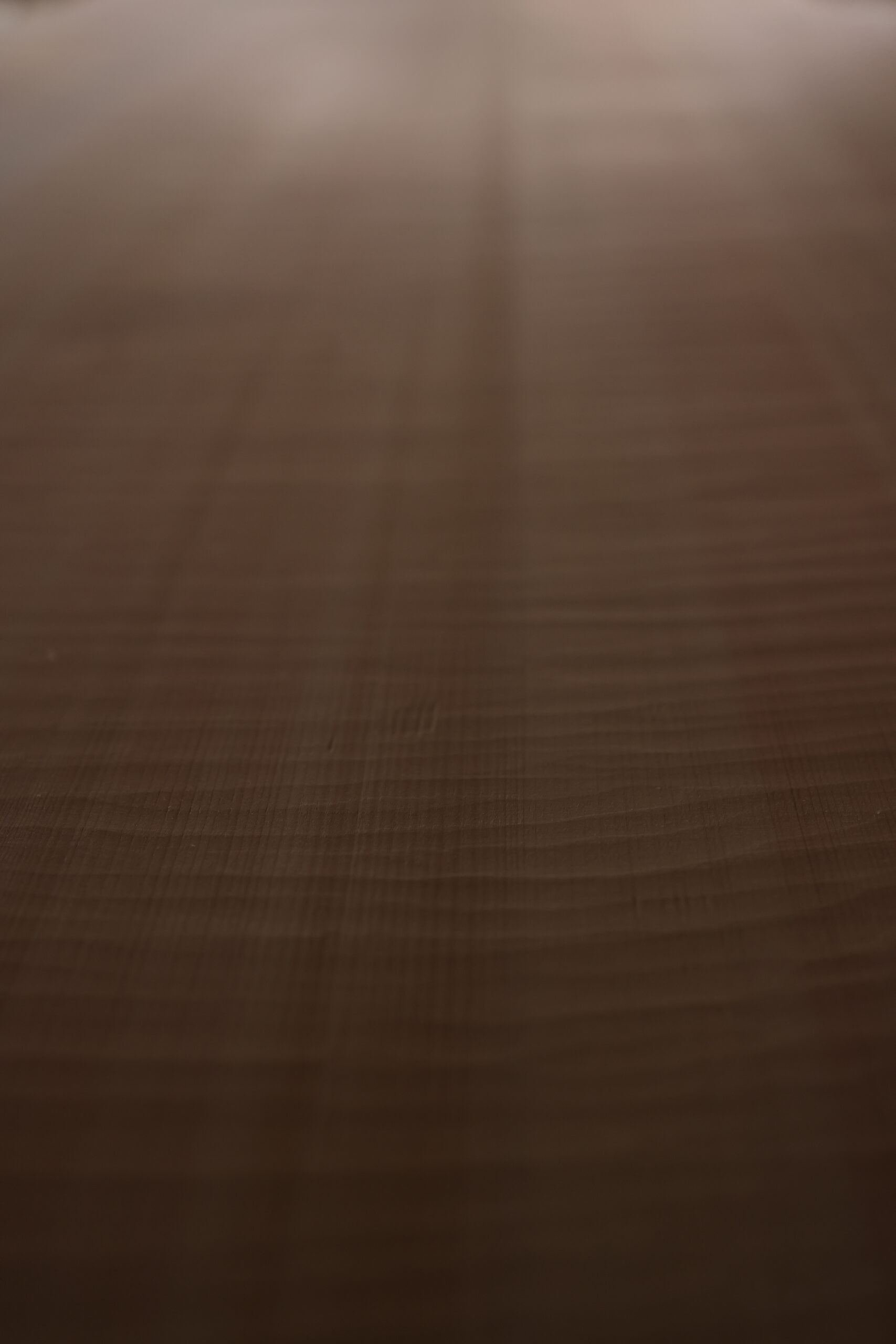
N: By that time, my work really became my own. I wasn’t making it for someone else. In a way, I became the protagonist of my creative process. When I got to that knowing, I also started understanding Tokuda’s unspoken message behind her words.
T: These tables confirmed me that TOMORROW FIELD is not just my project: It is the collective creation of everyone involved.
Interview/ Translation: Tomo Yoshizawa (Cultural Translator)
